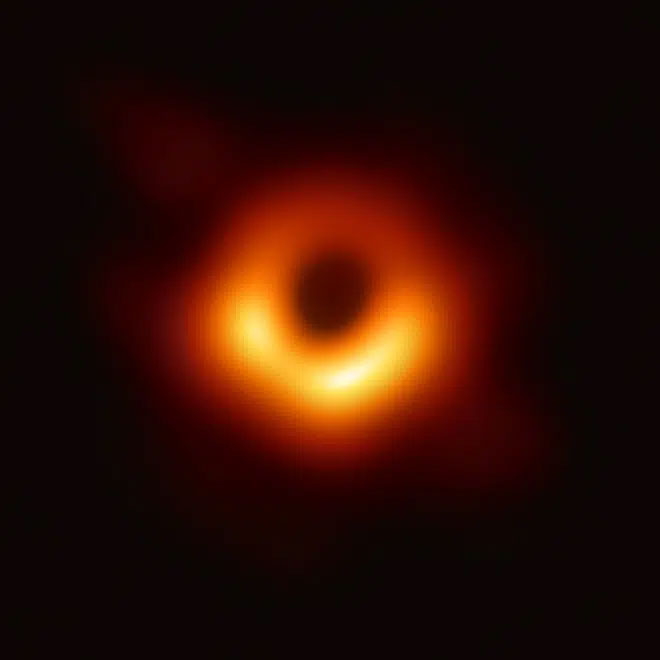Einstein’s general theory of relativity changed the way the world evaluates fundamental concepts from physics, space, and time to the interactions of giant floating objects in the universe. Yet like most great discoveries, it opens up more questions than answers.
One of the questions that lingered for years is the wormhole, which is seen as a bridge between points in space and in theory, and which in theory could be a shortcut for astronauts to move quickly.
Unlike black holes, wormholes exist only in fantasy. However, some researchers believe that there will soon be evidence for the existence of worm pits. In recent months, a slew of new scientific papers have been published that have increased the likelihood that the wormhole is physically present.
Black holes and wormholes are special responses that derive from Einstein’s formula, which appear when structures in space-time are bent by gravity.
For example, when matter is dense, the space-time matrix will be bent to the point that, as fast as a photon would not escape. This is called a black hole.
Einstein’s theory showed that spatiotemporal panels can be stretched, bent, or persisted in any shape. In 1935, Einstein and physicist Nathan Rosen described how two space-time panels could be linked together, creating a bridge between the two worlds. This is a type of wormhole and from the time this term first appeared, many other types of wormholes were considered by scientists.
Some wormholes allow matter to move between them, which means we can travel through space using these shortcuts. In order for the space path to be wide and clear, they had to be large in size and carry a tremendous amount of “negative energy” to keep the hole in the space-time panel open. It must be strong enough to withstand the natural force called gravity.
We already know that negative energies exist, we can even generate them in the laboratory. We also know that thanks to the impact of this negative energy, the new Universe continues to expand in all directions. Based on these facts, we can rely on nature to know how to build wormholes.

If the wormhole really existed, could we safely walk through it?
How do you see the wormhole?
How do you prove that wormholes exist? In a recently published scientific report, Russian astronomers say they may exist at the center of a number of illuminated galaxies, they also suggest several methods of observing potential wormholes.
Using mathematics, they discovered that when the escaped matter collided with the material sucked into the wormhole, they could produce a series of gamma rays. It is quite possible to detect these gamma rays with a radio telescope.
This radiation can also be a characteristic of wormholes and black holes; Previously, science only looked at the appearance of these celestial objects and made judgments. The black hole produces less gamma rays and emits a long ray, while the radiation generated by the wormhole produces a sphere. Even so, the type of wormhole mentioned in this study – the wormhole that exists in the center of a galaxy – even though two points in space are connected, the high temperatures in that area make travel uncomfortable, even Not possible. The high temperatures of the galactic center will burn off the “trivial” materials used in the construction of cruise ships.
However, there is still hope for wormholes that lie far from these hot spots.

The center of the Milky Way is the bright area in the upper left corner of the image.
Unlike black holes, wormholes can release the gravitational force generated by celestial bodies at the other “end of the road”. This bizarre effect could change the trajectories of floating stars in the galactic center. According to new research, when our observatory is sensitive enough, we will be able to measure these special effects.
Just recently, another group of researchers announced a new discovery: strange circles of radio waves exist in space. These circles are extremely large and have no connection with a celestial body. At present, science has not explained them so that we can completely “throw” the vortex.
Wormhole> Black hole
We love wormholes more than black holes: for one thing that gives us the ability to travel to new lands to satisfy our passion for discovery, and one that only leads to grief and death. Stephen Hawking’s latest book even hypothesizes that the wormhole is the way we travel through time.
 The first image of a black hole captured by mankind.
The first image of a black hole captured by mankind.
The concept of wormholes also arose in quantum physics, which describes how tiny particles interact with each other. According to quantum mechanics, particles can appear in space and then disappear immediately; We even had experiences which proved the existence of this strange event. And if the seeds could form naturally, why couldn’t the vortex?
Physicists believe wormholes could form early in the Universe, from clusters of quantum particles continually appearing and disappearing. Perhaps these “old” wormholes still exist somewhere in a large space.
Recent experiments with “instantaneous quantum shift” – the way of transferring quantum information from one point to another – work in the same way that two black holes are linked together by a wormhole. These experiments seem to explain the “black hole information paradox,” which suggests that physical information can disappear forever in the black hole.
With wormholes linked to both gravity and quantum physics, they not only have the potential to allow us to travel interstellar, but can also become a bridge between two concepts of physics, true but not. We may not have found the wormhole yet, but when that day comes, they will be beautiful.


